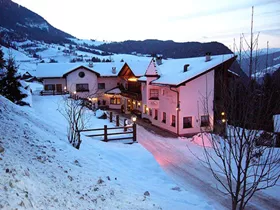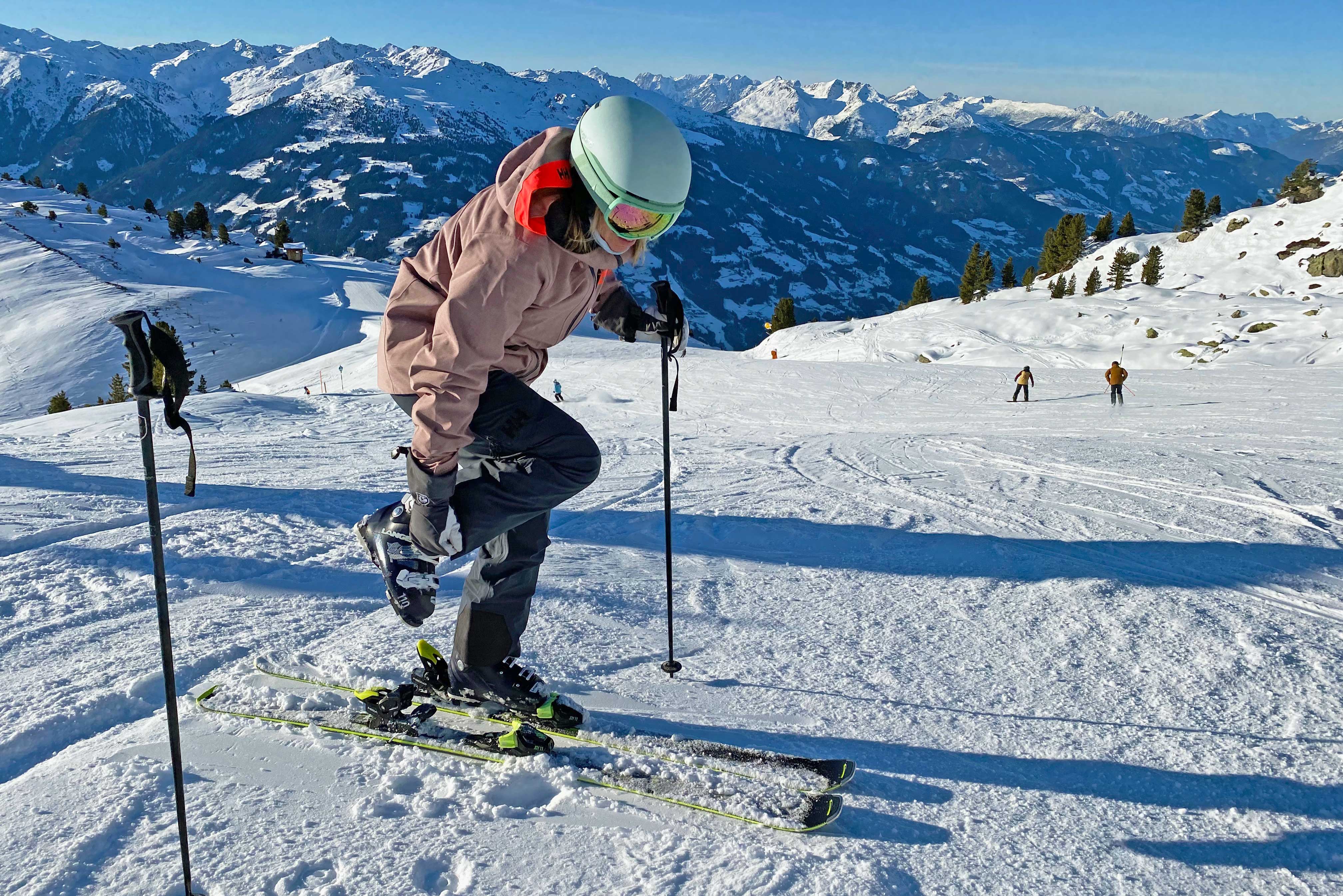
As skiing and snowboarding become more popular each year with British holiday makers who prefer to spend their winter holiday on the slopes rather than in the sun, it’s essential to remember that snow sports are intense physical activities that require a good physical condition and compliance with the rules of conduct and safety on the slopes. In its report from 2012, the French "Association des Médecins de Montagne" counted 140,000 skiing accident victims out of 7 million people for the 2011/2012 season. Last season's report is unfortunately not yet available! Read on to find out how to avoid turning your ski holiday into a hospital stay!
An increased risk for beginners on the slopes
According to the Association des Médecins de Montagne’s (the Association of Mountain Doctors) report, beginner skiers and snowboarders on the slopes are twice as likely to have an accident resulting in an injury, as more experienced skiers. This is particularly true during the first four days of their first week of skiing or snowboarding. To help prevent accidents, the best advice is to be well-prepared for your first ski holiday, to be in good physical shape and to work the right muscles and joints to help improve balance – essential once up on the slopes.
Snowboarders beware of wrist factures
Snowboarders need to be protect themselves against the high risk of wrist fractures - especially among those under 16 years old or for older people while learning to snowboard. Wrist fractures represent 27.5 % of snowboarding injuries and this number reaches 60 % for the under 16 year-old age-egroup. There is a simple, inexpensive way of preventing this common accident and that is to wear wrist guards.
The most common skiing injury - a sprained knee
Sprained knee injuries account for 31 % of serious skiing accidents on the slopes and in 16% of cases there is a rupture of the cruciate ligaments which often results in surgery and a long re-education. Sprained knees are particularly common in women and the number of accidents reaches 50 % with 30% of cases being a complete rupture of the cruciate ligaments. To help prevent this kind of accident, the Association des Médecins de Montagne (the Association of Mountain Doctors) insist that it is essential to ensure the proper ski binding settings and do not forget to adjust them at the beginning of the season if you have your own skis. If you’ve ever wondered why the man in the ski shop asks you how much you weigh, it’s not because he is being indiscrete, it is because this is vital information to ensure that your bindings are set correctly and will release under too much pressure during a fall.
Collisions on the ski slopes are on the increase
Collisions on the ski slopes are responsible for one third of head injuries and one-third of serious concussions. These figures should finally convince skiers and snowboarders of the need to wear a ski or snowboard helmet. With nearly 97% of children and 72% of adolescents up on the slopes already wearing helmets, adults are seriously lagging behind with a mere 37% of adults wearing helmets while skiing or snowboarding.
Photo : solutionssportsecurite.com
Golden rules to prevent accidents on the slopes
Last year, The French Ministry of Sports launched a campaign for the prevention of skiing and snowboarding accidents in the winter on the ski slopes. It clearly defined 2 rules in particular that should always be respected up on the slopes: 1. "Control your speed" Speed control is an essential element for your own safety and that of others. Good control of your speed results in your ability to master skiing or snowboarding techniques, to stay within your physical capacity, to stay concentrated, to stay within your equipment’s specifications – your skis or snowboard have their limits. It is also important to remember other factors that should make you change your speed on the slopes such as the quality of the snow (slush or powder), the configuration of the ski slope and weather conditions and visibility are major factors that should always be taken into consideration. Respecting speed limits allows you to control your trajectory and to change direction or stop to avoid skiers, snowboarders or obstacles below you on the slopes. 2. "Pay attention to skiers and snowboarders in front of you" One of the basic components of your choice of path on a ski slopes, is the position of the skiers and snowboarders further down the slope than you. It is your responsibility to avoid them – they may not be aware that you are there until you overtake them. Avoid passing too close to other people on the slopes – especially children and/or beginners – you may surprise the other person and cause them to fall without even coming in contact with them!
In the light of Michael Schumacher's recent terrible accident, we cannot stress how important it is to respect the above rules, take safety precautions, hire a guide to ski off-piste and to always keep in mind that skiing and snowboarding can be extremely dangerous sports. We wish you a good and safe ski holiday this year.
As skiing and snowboarding become more popular each year with British holiday makers who prefer to spend their winter holiday on the slopes rather than in the sun, it’s essential to remember that snow sports are intense physical activities that require a good physical condition and compliance with the rules of conduct and safety on the slopes. In its report from 2012, the French "Association des Médecins de Montagne" counted 140,000 skiing accident victims out of 7 million people for the 2011/2012 season. Last season's report is unfortunately not yet available! Read on to find out how to avoid turning your ski holiday into a hospital stay!
An increased risk for beginners on the slopes
According to the Association des Médecins de Montagne’s (the Association of Mountain Doctors) report, beginner skiers and snowboarders on the slopes are twice as likely to have an accident resulting in an injury, as more experienced skiers. This is particularly true during the first four days of their first week of skiing or snowboarding. To help prevent accidents, the best advice is to be well-prepared for your first ski holiday, to be in good physical shape and to work the right muscles and joints to help improve balance – essential once up on the slopes.
Snowboarders beware of wrist factures
Snowboarders need to be protect themselves against the high risk of wrist fractures - especially among those under 16 years old or for older people while learning to snowboard. Wrist fractures represent 27.5 % of snowboarding injuries and this number reaches 60 % for the under 16 year-old age-egroup. There is a simple, inexpensive way of preventing this common accident and that is to wear wrist guards.
The most common skiing injury - a sprained knee
Sprained knee injuries account for 31 % of serious skiing accidents on the slopes and in 16% of cases there is a rupture of the cruciate ligaments which often results in surgery and a long re-education. Sprained knees are particularly common in women and the number of accidents reaches 50 % with 30% of cases being a complete rupture of the cruciate ligaments. To help prevent this kind of accident, the Association des Médecins de Montagne (the Association of Mountain Doctors) insist that it is essential to ensure the proper ski binding settings and do not forget to adjust them at the beginning of the season if you have your own skis. If you’ve ever wondered why the man in the ski shop asks you how much you weigh, it’s not because he is being indiscrete, it is because this is vital information to ensure that your bindings are set correctly and will release under too much pressure during a fall.
Collisions on the ski slopes are on the increase
Collisions on the ski slopes are responsible for one third of head injuries and one-third of serious concussions. These figures should finally convince skiers and snowboarders of the need to wear a ski or snowboard helmet. With nearly 97% of children and 72% of adolescents up on the slopes already wearing helmets, adults are seriously lagging behind with a mere 37% of adults wearing helmets while skiing or snowboarding.
Photo : solutionssportsecurite.com
Golden rules to prevent accidents on the slopes
Last year, The French Ministry of Sports launched a campaign for the prevention of skiing and snowboarding accidents in the winter on the ski slopes. It clearly defined 2 rules in particular that should always be respected up on the slopes: 1. "Control your speed" Speed control is an essential element for your own safety and that of others. Good control of your speed results in your ability to master skiing or snowboarding techniques, to stay within your physical capacity, to stay concentrated, to stay within your equipment’s specifications – your skis or snowboard have their limits. It is also important to remember other factors that should make you change your speed on the slopes such as the quality of the snow (slush or powder), the configuration of the ski slope and weather conditions and visibility are major factors that should always be taken into consideration. Respecting speed limits allows you to control your trajectory and to change direction or stop to avoid skiers, snowboarders or obstacles below you on the slopes. 2. "Pay attention to skiers and snowboarders in front of you" One of the basic components of your choice of path on a ski slopes, is the position of the skiers and snowboarders further down the slope than you. It is your responsibility to avoid them – they may not be aware that you are there until you overtake them. Avoid passing too close to other people on the slopes – especially children and/or beginners – you may surprise the other person and cause them to fall without even coming in contact with them!
In the light of Michael Schumacher's recent terrible accident, we cannot stress how important it is to respect the above rules, take safety precautions, hire a guide to ski off-piste and to always keep in mind that skiing and snowboarding can be extremely dangerous sports. We wish you a good and safe ski holiday this year.














